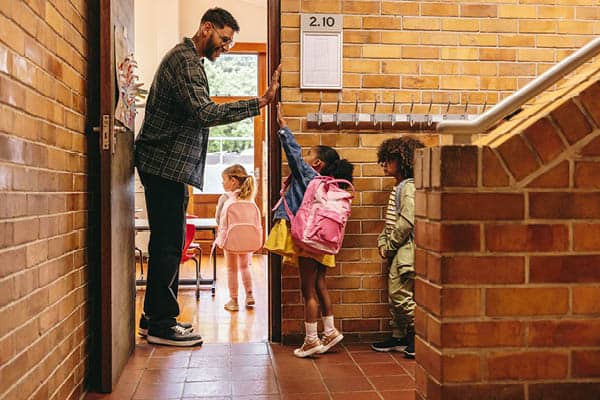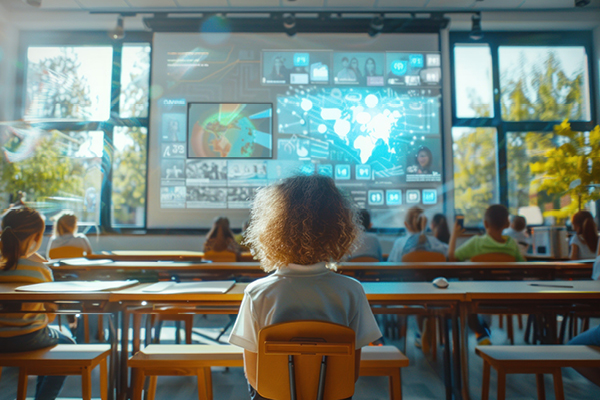What if someone told teachers that engaging in a daily classroom ritual with students that takes less than five minutes and requires little to no training could improve your students’ mood and behavior immediately, make them more likely to engage in learning, according to Education Week.
It’s a simple practice that involves greeting each student individually as they walk through the classroom door. Second grade teacher Kaylee Hutcheson has embraced the practice this year, and has no plans of stopping.
For Hutcheson and her 2nd graders at Hawthorne Elementary School in Mexico, Mo., the ritual looks something like this: Every morning before the school day officially begins, she meets her students in the gym, then they walk together to her classroom. She stands at the door, with her students lined up, waiting to enter. Then comes the fun part. “I give them their choice of greetings: high-five, elbow taps. Lots of them are huggers; that’s their love language,” said Hutcheson.
The practice has some solid research tying it to an array of benefits, from improved classroom management to better student engagement. It’s even been shown to improve educators’ teaching skills.
Classroom management is an age-old challenge and, in recent years, teachers have reported worsening classroom behavior. Seventy percent of educators agreed that students in their schools are misbehaving more now compared with the fall of 2019, according to a nationwide 2023 survey by the EdWeek Research Center. In another 2023 Edweek Research Center survey, more than one-third of over 1,800 educators said that classroom management challenges such as student cellphone use, disruptive behavior, or lack of respect are causing them to consider leaving their jobs.
Hutcheson said that since she’s been engaging students in daily individual greetings, she’s noticed fewer classroom disruptions and behavior issues throughout the morning. “I really do think the morning greeting plays a big part in that,” she said.
Hutcheson packs a lot into just the two to three minutes that she spends individually greeting her students before they enter her classroom.
“I have 24 students, so I don’t always get time with each of them individually every day. This allows me to start our day on a super positive note,” she said. “I definitely want them to know that I’m glad that they’re here.”
During the greeting, as Hutcheson looks each student in the eye, many use the opportunity to share something with her. She’s heard about new puppies, siblings, and more. But not all students want to share, or even engage in the greeting, all the time.
“I tell them they don’t have to; it’s their choice,” Hutcheson said. “I do have a few students who don’t typically greet me every day. But I still make a point to greet them and say their name.”
Perhaps more surprising is recent evidence showing that positive student-teacher relationships can improve teachers’ effectiveness, too. So says a study conducted by the University of Missouri College of Education and Human Development that analyzed data from 280 school districts across the state and asked students in grades 4-10 to rate their teachers’ effectiveness on high-impact teaching methods, such as sparking cognitive engagement, promoting critical thinking and problem solving, and making curriculum interesting and relevant. Students were also asked if they felt that their teacher “cared about them, made themselves available, and made learning enjoyable.”
According to the survey responses, students who reported having more positive relationships with their teachers also noted that their teachers used more high-impact teaching practices. “Positive teacher-student relationships change student behavior, and in this study, we found building those positive relationships actually leads to better teaching, too,” said Christi Bergin, lead author of the study.
“The [individual student] greeting is not something that’s mandatory, or something we’ve ever talked about at a staff meeting,” Hutcheson said. “Now, it’s just a part of my daily routine.”
Education Week





